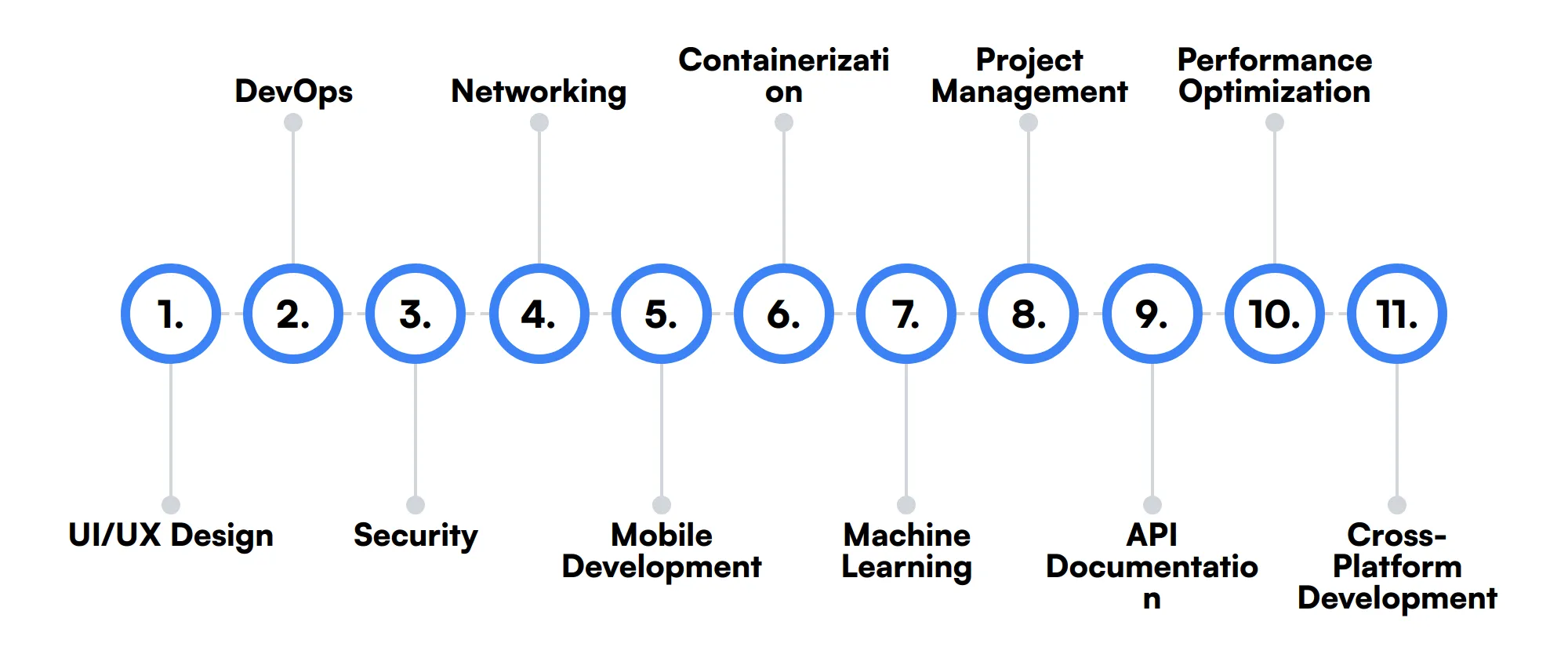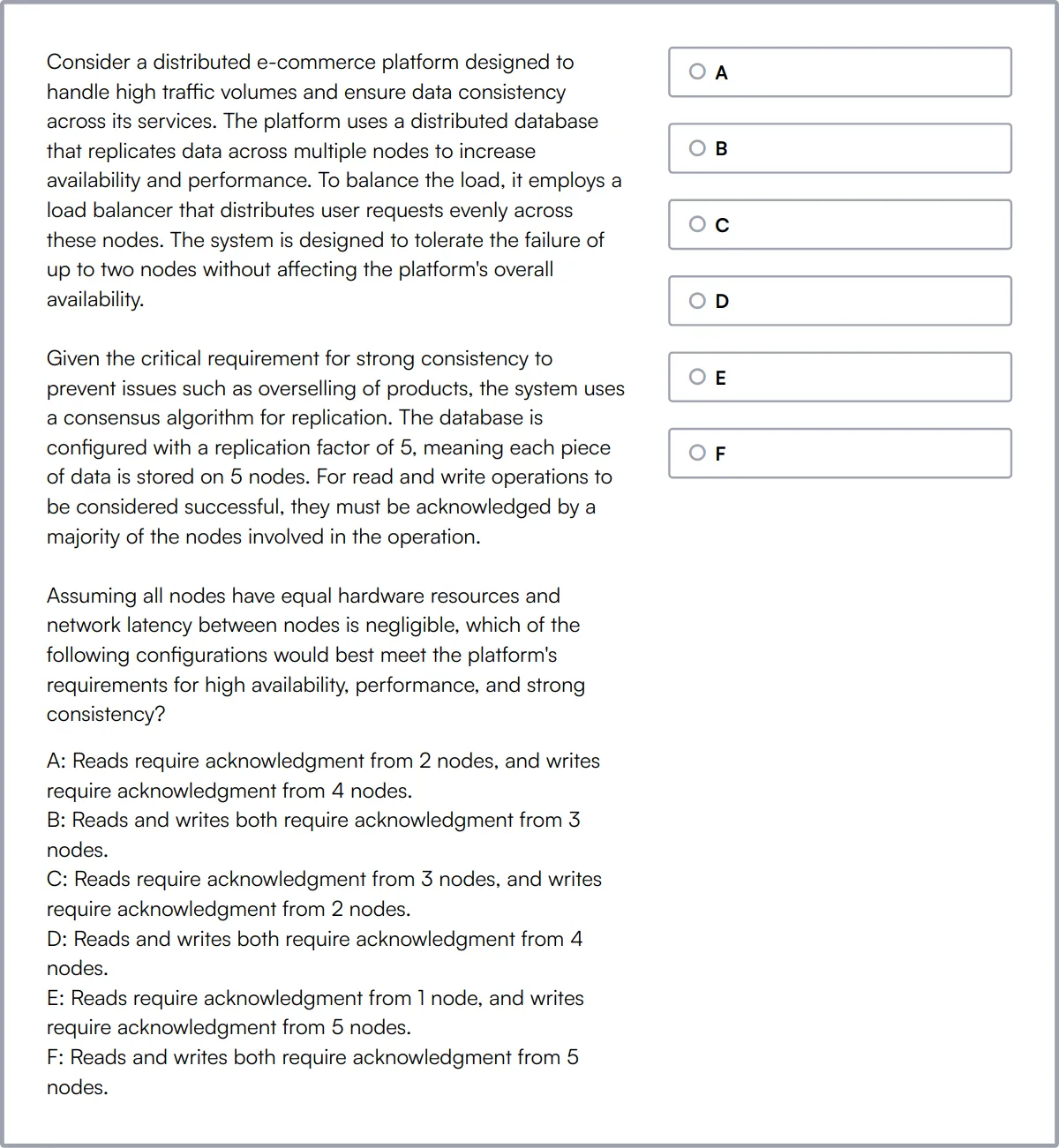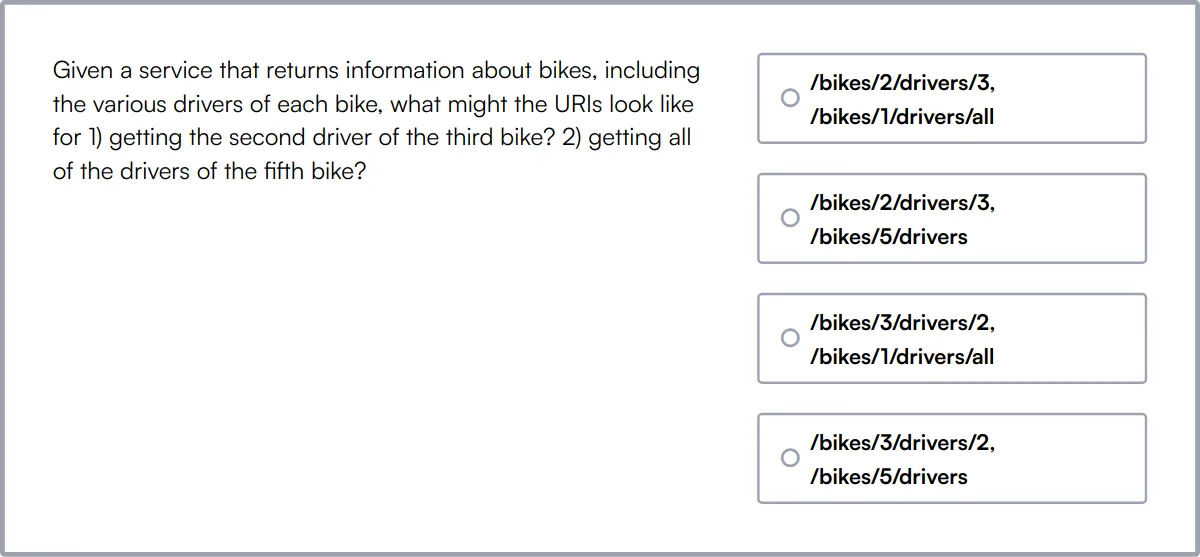Product Engineers are at the heart of product development, turning ideas into tangible, functional products. They work closely with design teams and other engineers to ensure that the final product meets both market needs and company standards.
The skill set required for a Product Engineer includes a strong foundation in engineering principles, proficiency in design software, and a knack for problem-solving and innovation. Additionally, effective communication and project management skills are crucial to facilitate collaboration across various teams.
Candidates can write these abilities in their resumes, but you can’t verify them without on-the-job Product Engineer skill tests.
In this post, we will explore 9 essential Product Engineer skills, 11 secondary skills and how to assess them so you can make informed hiring decisions.
Table of contents
9 fundamental Product Engineer skills and traits
The best skills for Product Engineers include Programming Languages, System Design, Data Structures, Algorithms, Version Control, APIs and Web Services, Testing and Debugging, Database Management and Cloud Computing.
Let’s dive into the details by examining the 9 essential skills of a Product Engineer.

Programming Languages
A product engineer must be proficient in multiple programming languages such as Python, Java, or C++. These languages are the backbone of software development, enabling engineers to build, test, and maintain applications effectively.
Check out our guide for a comprehensive list of interview questions.
System Design
Understanding system design is crucial for creating scalable and efficient software architectures. Product engineers use this skill to plan and structure systems that can handle large volumes of data and user interactions.
Data Structures
Knowledge of data structures like arrays, linked lists, and hash tables is fundamental. Product engineers leverage these structures to organize and store data efficiently, which is essential for optimizing performance.
Algorithms
Algorithms are the step-by-step procedures for solving problems. A product engineer uses algorithms to develop solutions that are both time and space-efficient, ensuring that applications run smoothly.
Version Control
Proficiency in version control systems like Git is necessary for managing code changes and collaborating with team members. This skill helps product engineers track modifications and maintain a history of their codebase.
APIs and Web Services
Understanding APIs and web services is important for integrating different software systems. Product engineers use this knowledge to enable communication between various applications, enhancing functionality and user experience.
Testing and Debugging
Testing and debugging are critical for ensuring software quality. Product engineers must be adept at identifying and fixing bugs, as well as writing tests to validate that their code works as intended.
Database Management
Managing databases involves designing, implementing, and maintaining database systems. Product engineers use this skill to ensure data integrity, security, and performance in their applications.
Cloud Computing
Familiarity with cloud platforms like AWS, Azure, or Google Cloud is increasingly important. Product engineers leverage cloud services to deploy, scale, and manage applications in a cost-effective and flexible manner.
For more insights, check out our guide to writing a Cloud Engineer Job Description.
11 secondary Product Engineer skills and traits
The best skills for Product Engineers include UI/UX Design, DevOps, Security, Networking, Mobile Development, Containerization, Machine Learning, Project Management, API Documentation, Performance Optimization and Cross-Platform Development.
Let’s dive into the details by examining the 11 secondary skills of a Product Engineer.

UI/UX Design
While not always a primary focus, understanding UI/UX design principles helps product engineers create user-friendly interfaces. This knowledge ensures that the end product is both functional and enjoyable to use.
DevOps
Knowledge of DevOps practices can be beneficial for automating and streamlining the software development lifecycle. Product engineers with DevOps skills can improve deployment processes and system reliability.
Security
Basic understanding of cybersecurity principles helps product engineers protect applications from vulnerabilities and attacks. This skill is essential for maintaining user trust and data integrity.
Networking
Understanding networking concepts can aid in optimizing application performance and troubleshooting connectivity issues. Product engineers use this knowledge to ensure seamless communication between different system components.
Mobile Development
Experience with mobile development frameworks like React Native or Flutter can be advantageous. Product engineers with this skill can extend their applications to mobile platforms, reaching a broader audience.
Containerization
Familiarity with containerization tools like Docker and Kubernetes helps in creating portable and consistent development environments. Product engineers use these tools to simplify deployment and scaling of applications.
Machine Learning
Basic knowledge of machine learning can be useful for integrating intelligent features into applications. Product engineers can leverage machine learning models to enhance functionality and user experience.
Project Management
Understanding project management methodologies like Agile or Scrum can help product engineers coordinate tasks and meet deadlines. This skill ensures that projects are completed efficiently and effectively.
API Documentation
Writing clear and comprehensive API documentation is important for enabling other developers to use and integrate with your software. Product engineers with this skill can facilitate better collaboration and support.
Performance Optimization
Skills in performance optimization help product engineers improve the speed and efficiency of their applications. This involves profiling code, identifying bottlenecks, and implementing solutions to enhance performance.
Cross-Platform Development
Experience with cross-platform development tools allows product engineers to create applications that run on multiple operating systems. This skill is valuable for reaching a wider user base with a single codebase.
How to assess Product Engineer skills and traits
Assessing the skills and traits of a Product Engineer involves more than just glancing at their resume. It's about understanding how well they can apply their knowledge of programming languages, system design, and more to solve real-world problems. This is where the challenge lies; how do you measure such complex competencies effectively?
Traditional interviews often fall short in evaluating the depth of a candidate's technical abilities. This is why many companies are turning to structured assessments that provide a clearer picture of a candidate's potential to perform on the job. For instance, using Adaface assessments, companies have seen a 85% reduction in screening time while maintaining a high standard of candidate quality. Learn more about these assessments here.
A comprehensive assessment should cover a range of skills from data structures and algorithms to cloud computing and database management. By simulating real-world scenarios and challenges, you can see how candidates handle typical tasks they would encounter in their role as a Product Engineer.
Let’s look at how to assess Product Engineer skills with these 6 talent assessments.
Computer Programmer Coding Aptitude Test
The Computer Programmer Coding Aptitude Test evaluates candidates on programming fundamentals, data structures, algorithm basics, technical aptitude, and coding skills.
The test assesses their understanding of programming concepts, algorithms, data structures, and their ability to solve problems using logic and analytical thinking. It includes scenario-based MCQs and a coding question to evaluate their proficiency in writing functional code.
Successful candidates demonstrate strong problem-solving skills, the ability to analyze problems, identify patterns, and develop effective solutions using programming concepts.

System Design Online Test
The System Design Online Test evaluates candidates on system design, algorithm and data structures, network protocols, database design, distributed systems, cloud computing, performance optimization, and microservices architecture.
The test assesses their ability to identify system requirements, choose appropriate architectures and design patterns, and create high-level design specifications. It includes scenario-based MCQs to evaluate their proficiency in database design, data modeling, system integration, security, and performance optimization.
Candidates who perform well demonstrate a deep understanding of designing software systems that meet both functional and non-functional requirements.

Software Engineering Online Test
The Software Engineering Online Test evaluates candidates on object-oriented programming, database design, algorithms and data structures, testing and quality assurance, web development, software security, and code optimization.
The test assesses their understanding of core computer science concepts such as data structures, algorithms, databases, programming paradigms, and design patterns. It includes scenario-based MCQs and a coding question to evaluate their problem-solving and hands-on programming ability.
High-scoring candidates show proficiency in writing optimized code, understanding software security principles, and ensuring quality through testing and quality assurance practices.
Data Science Assessment Test
The Data Science Assessment Test evaluates candidates on machine learning techniques, data visualization, analytics with R or Python, exploratory data analysis, data manipulation, statistics, regression analysis, data cleansing, and predictive modeling.
The test assesses their proficiency in statistics, probability, linear and non-linear regression models, and their ability to analyze data and leverage Python or R to extract insights. It includes MCQs on probability, statistics, and machine learning.
Successful candidates demonstrate strong analytical skills, the ability to manipulate and visualize data, and proficiency in using machine learning techniques to build predictive models.

Git Online Test
The Git Online Test evaluates candidates on Git basics, repository creation, branching and merging, committing changes, conflict resolution, remote repositories, rebasing, Git workflows, Git commands and concepts, and Git branching models.
The test assesses their understanding of basic and advanced Git commands, their ability to resolve conflicts, and their proficiency in using Git to manage source code. It includes scenario-based MCQs to evaluate their knowledge of Git workflows and branching models.
Candidates who perform well demonstrate a strong understanding of version control principles and the ability to manage source code effectively using Git.

REST API Test
The REST API Test evaluates candidates on technical aptitude, API integrations, REST API basics, API design, best practices, designing backend services, and coding.
The test assesses their understanding of RESTful APIs and their ability to create, interact, and test them. It includes multiple-choice questions to evaluate knowledge of REST principles, HTTP methods, status codes, authentication, serialization formats, and best practices.
Successful candidates demonstrate proficiency in designing and implementing RESTful APIs, understanding HTTP methods and status codes, and following best practices for API design and security.

Summary: The 9 key Product Engineer skills and how to test for them
| Product Engineer skill | How to assess them |
|---|---|
| 1. Programming Languages | Evaluate proficiency in writing clean, maintainable, and efficient code. |
| 2. System Design | Assess ability to architect scalable and reliable systems. |
| 3. Data Structures | Check understanding of organizing and storing data effectively. |
| 4. Algorithms | Measure problem-solving skills and optimization techniques. |
| 5. Version Control | Gauge experience in managing code changes and collaboration. |
| 6. APIs and Web Services | Evaluate skills in designing and integrating APIs. |
| 7. Testing and Debugging | Determine capability to identify and fix issues. |
| 8. Database Management | Assess knowledge in managing and querying databases. |
| 9. Cloud Computing | Check experience with cloud platforms and services. |
AI Product Manager Test
Product Engineer skills FAQs
What programming languages should a Product Engineer be proficient in?
Product Engineers should be skilled in languages relevant to their project's tech stack. Common languages include JavaScript, Python, Java, and C#. Familiarity with multiple languages allows for flexibility across different projects.
How important is system design knowledge for a Product Engineer?
Understanding system design is key for Product Engineers as it enables them to build scalable and maintainable systems. They should be able to design both high-level architecture and detailed component interactions.
What role do data structures and algorithms play in product engineering?
Data structures and algorithms are critical for solving complex problems efficiently. Product Engineers use these to optimize performance and ensure data is processed effectively.
Why is version control important for Product Engineers?
Version control systems like Git help Product Engineers manage changes to the codebase, collaborate with others, and maintain a history of project evolution, which is essential for team-based projects.
How do APIs and web services integrate into a Product Engineer's role?
APIs and web services are integral for building and integrating software applications. Product Engineers need to create, utilize, and manage APIs to allow systems to communicate and operate effectively.
What testing and debugging skills should a Product Engineer have?
Product Engineers should be adept at writing tests and using debugging tools to ensure software reliability and functionality. Skills in unit testing, integration testing, and automated testing frameworks are important.
How does knowledge of cloud computing benefit a Product Engineer?
Cloud computing skills enable Product Engineers to design and deploy applications that are scalable, reliable, and accessible. Familiarity with platforms like AWS, Azure, or Google Cloud is beneficial.
What is the significance of UI/UX design in the role of a Product Engineer?
A strong grasp of UI/UX design principles helps Product Engineers create intuitive and user-friendly interfaces. This enhances user satisfaction and engagement with the product.

40 min skill tests.
No trick questions.
Accurate shortlisting.
We make it easy for you to find the best candidates in your pipeline with a 40 min skills test.
Try for freeRelated posts
Free resources



